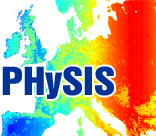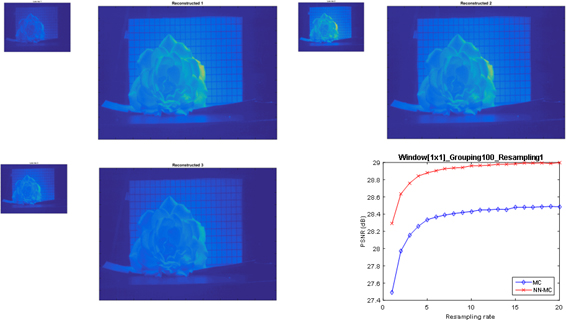Spectral Mosaic Data Recovery |
A fundamental issue that hyperspectral imaging sensors have to address is how to efficiently collect the three dimensional HSI data, two spatial and one spectral, using a single detector, an 1D array, or 2D plane detectors. A shortcoming shared sate-of-the-art approaches concerns the scanning requirements for constructing the complete 3D hyperspectral datacube where either multiple lines/pixels have to be scanned, or multiple frames have to be acquired in order to obtain the complete spectral profile of the scene. Snapshot Mosaic Multispectral Imaging architectures like the one employed in PHySIS, rely on Spectrally Resolved Detector Arrays (SRDA) where each pixel is associated with a specific spectral region, thus allowing the acquisition of a full hyperspectral cube from a single exposure. Unfortunately, to achieve high temporal resolution imaging, SRDA architectures must sacrifice spatial resolution for spectral resolution. |
To address this problem, we consider a novel demosaicing algorithm, specifically tuned for SRDA approaches , which exploits the inherent spatio-spectral redundancies in order to obtain complete spectral hypercubes. Our method relies on a novel mathematical framework termed Matrix Completion which asserts that severely undersampled low rank matrices can be recovered by solving an efficient nuclear norm optimization problem. Furthermore, we enhance the Matrix Completion framework by introducing additional constraints regarding the non-negative nature of the measurements. |
To validate the merits of the proposed approach, we explored the enhancement of images acquired using the IMEC Snapshot Mosaic sensor capturing images in the $600-875$ nm range, according to a 5x5 spectral pattern structure. |
Publications:
|
Achievements




